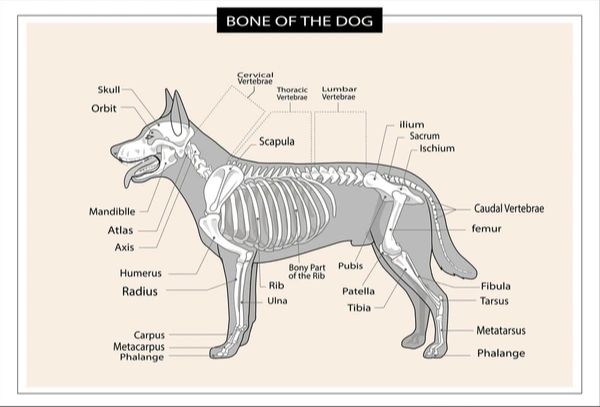Introducing Vertebrates and Invertebrates
Animals are often categorized into two main groups – vertebrates and invertebrates. The key distinction between them is the presence or absence of a vertebral column, commonly known as a backbone.
Vertebrates are animals that possess an internal skeleton and spinal column. The vertebral column runs from the head to the tail, surrounds and protects the spinal cord, and provides an attachment point for ribs and muscles. This bony vertebral structure allows vertebrates to have more advanced nervous systems and larger brains. It also enables them to grow bigger and stronger than invertebrates.
In contrast, invertebrates are animals that lack a vertebral column. Instead of an internal skeleton, they may have an exoskeleton such as an outer shell or tough external covering. Invertebrates make up around 97% of all animal species on Earth. They include insects, spiders, worms, jellyfish and cephalopods like squid and octopuses. Their bodies tend to be much softer and more flexible compared to vertebrates.
In summary, the presence or absence of a backbone is the key anatomical difference between vertebrates and invertebrates. This structural distinction leads to major differences in their body plans, nervous systems, and abilities.
Vertebrate Characteristics
Vertebrates are animals that have a backbone or spinal column. The spine provides structure and support for the body and protects the spinal cord which runs down the center. Vertebrates have an internal skeleton made up of bone or cartilage. This internal skeleton gives the body its shape and offers protection for internal organs.
In addition to the spinal column, vertebrates share other common anatomical features like a skull to encase and protect the brain, ribs to protect organs like the heart and lungs, and paired appendages like arms/legs or fins. Vertebrates have complex circulatory systems including blood vessels and a heart to circulate blood and deliver oxygen. They also have advanced nervous systems and large, complex brains compared to invertebrates.
While invertebrates rely more on instinct, vertebrates have greater capabilities for learning and intelligence. Their senses are also more advanced, including good eyesight, hearing, taste, and smell. Overall, the vertebrate body plan provides structure, defenses, circulation, coordination, and advanced senses.
Invertebrate Characteristics
Invertebrates are animals that lack a vertebral column or spinal column. This is the key distinguishing feature that separates them from vertebrates. Here are some other common characteristics of invertebrates:
- No internal skeletons – Most invertebrates have a hard exoskeleton on the outside of their bodies for protection and structure. This is composed of chitin.
- No true brain – Invertebrates have simple nervous systems, often with clusters of nerve cells acting as mini-brains to control different parts of their bodies.
- No specialized systems – Invertebrates generally have less specialized internal systems and organs compared to vertebrates. Their circulatory and respiratory systems are more simple.
- Indeterminate growth – Many invertebrates keep growing through their lives, rather than having set adult sizes like vertebrates.
- Radial symmetry – Most invertebrate bodies display radial symmetry around a central axis, rather than bilateral symmetry like vertebrates.
- Asexual reproduction – Some invertebrates like starfish and sea anemones can reproduce asexually as well as sexually.

With over 97% of all animal species being invertebrates, they display amazing diversity in body forms, habitats, and modes of feeding. But they universally share the trait of lacking a backbone or internal skeleton.
Mammals as Vertebrates
Mammals are a group of animals that are warm-blooded, usually have hair or fur, give birth to live young, and feed their offspring milk from mammary glands. Mammals belong to the class Mammalia under the Phylum Chordata. Mammals have a vertebral column, which means they are part of the vertebrate subphylum. Vertebrates are organisms that have a central nervous system protected within an internal skeletal framework called the vertebral column or backbone.
All mammals, including dogs, have a spinal cord enclosed in a bony vertebral column that is made up of a series of bones called vertebrae. These vertebrae surround and protect the spinal cord along the back. The vertebral column links the entire skeleton together, provides anchorage for ribs and muscles, and allows for flexibility and movement. This internal skeletal framework is one of the key characteristics of vertebrates like mammals.
In addition to the vertebral column, mammals have other traits that classify them under vertebrates. They have a closed circulatory system with a heart that pumps blood, red blood cells, and advanced nervous systems including brains. The presence of bones, complex organ systems, and advanced sensory organs are also vertebrate features found in mammals like dogs.
Dogs as Mammals
Dogs belong to the mammal class, which is characterized by several distinctive features. Mammals are vertebrate animals that have hair or fur, are endothermic (warm-blooded), and nourish their young with milk produced by the females. As mammals, dogs exhibit all of these traits.
One of the defining features of mammals is that they give live birth to their young, rather than laying eggs like birds, reptiles, amphibians and fish. Female dogs carry their developing puppies in their womb and give birth to live young after a gestation period of around 60-65 days. The puppies are born alive and fully-formed, able to breathe, move, eat, and function on their own shortly after birth.
Another key mammalian trait seen in dogs is the presence of hair. Dogs have coats of fur that help insulate them and regulate their body temperature. Their fur varies in length and thickness depending on the breed, but all dogs have hair as mammals. Dogs shed and regrow their fur periodically. They also have finer hair on their faces like whiskers that serve sensory functions.
Mammals are additionally characterized as producing milk to feed their offspring. Female dogs have mammary glands that enable them to nurse their puppies. Puppies drink their mother’s milk which provides nutrients and immune factors essential to their health and growth. As mammal parents, both male and female dogs exhibit nurturing behavior toward their young.
Because they give live birth, have hair, and produce milk for their offspring, it’s clear dogs belong to the mammal class within the animal kingdom. Their mammalian origins differentiate them from other types of animals and inform much of their biology and behavior as a species.
Skeletal Structure of Dogs
All dogs have a skeletal system that classifies them as vertebrates. A dog’s internal skeleton consists of around 319 bones. The main structural framework is the spine, which is made up of interconnected vertebral bones that extend from the skull to the tip of the tail. The number of vertebrae varies by breed, but is typically between 39-45. Each vertebra has a hollow central canal for the spinal cord to pass through.
Ribs are attached to the dog’s vertebral column and wrap around the thorax to encase vital organs like the heart and lungs in a bony cage. Most dogs have 13 pairs of ribs. The first seven are directly attached to the sternum by costal cartilage to form the ribcage, while the remaining six pairs are floating ribs.
Other key bones that make up a dog’s axial skeleton include the skull, jaw, pelvis, and shoulder/hip bones. The appendicular skeleton consists of the bones of the limbs – the front legs have bones homologous to human arms and hands, while the back legs contain those equivalent to human thighs, calves, and feet.

A dog’s skeleton enables body structure, movement, organ protection, calcium storage, and blood cell production. The size, proportion, and shape of bones varies greatly between breeds, but all dogs maintain the vertebrate skeletal system required for mobility.
Other Vertebrate Traits in Dogs
In addition to their vertebral columns, dogs share many other traits common to vertebrates. Some of the key vertebrate features found in dogs include:
Nervous System – Dogs have a highly developed nervous system with a brain, spinal cord, and complex network of nerves and neurons. This allows them to receive sensory input, process information, and coordinate their body movements.
Closed Circulatory System – Their circulatory system is closed, meaning the blood is contained in vessels and pumped by a heart. Oxygenated and deoxygenated blood circulate separately for efficient respiration.
Internal Organs – Important organs like the brain, heart, lungs, liver, kidneys are protected within the body cavity. This internalization of organs is a key vertebrate feature.
Specialized Sense Organs – Dogs have specialized eyes, ears, nose and tongue that give them excellent senses of vision, hearing, smell and taste.
Endoskeleton – In addition to the vertebral column, dogs have an endoskeleton made of hard bones that provide attachment points for muscles/tendons.
Respiratory System – Dogs have lungs and breathe air through their nose and mouth. The respiratory system oxygenates blood and removes carbon dioxide.
Overall, dogs possess the advanced sensory, nervous, circulatory and respiratory systems that allow vertebrates to thrive on land and in air.
Why Dogs Are Not Invertebrates
Dogs clearly belong to the vertebrate group of animals and not the invertebrate group for several key reasons. Invertebrates have very different anatomical structures and body plans compared to vertebrates like dogs.
For example, invertebrates do not have a backbone or spinal column. Their bodies are supported by an exoskeleton made of chitin instead of an internal skeleton. Invertebrates also exhibit radial symmetry where their body parts extend outward from a central axis. Vertebrates like dogs have bilateral symmetry with a distinct head, tail and left and right sides.
Additionally, invertebrates do not have highly developed organ systems or large, complex brains encased in skulls like vertebrates do. They also lack other vertebrate characteristics such as hair, mammary glands, and features associated with homeothermy and endothermy.
Clearly, when examining the physiology and anatomy of dogs, they align much more closely with vertebrate traits than invertebrate ones. Dogs have backbones, skulls, bilateral symmetry, complex organ systems, and other unequivocal vertebrate features that distinguish them from invertebrate groups like insects, mollusks, worms, and jellyfish.
Examples of Dog Invertebrates
Dogs are likely to come across many types of invertebrates as they explore the world around them. Here are some common invertebrates that dogs may interact with:

Spiders
Spiders are arthropods, an invertebrate phylum. There are many different types of spiders that dogs may find around the home or in the yard, including daddy long legs, black widows, wolf spiders, orb weavers, and more. Some spiders can bite and may be harmful to dogs if bitten.
Worms
Worms like earthworms, roundworms, flatworms and tapeworms are invertebrates that dogs may eat or come into contact with. Worms lack a true skeleton or spinal column. Some types of worms can infest dogs and require medical treatment.
Insects
Insects like flies, mosquitos, ants, bees, wasps, beetles, moths, crickets, and cockroaches fall under the invertebrate group. Dogs may be intrigued by these insects and try to bite, eat or play with them. Some insects can sting or harm dogs.
By being aware of these and other invertebrates, dog owners can protect their pets and treat any issues caused by encounters with such creatures. Understanding that dogs have an internal skeleton marks them as vertebrates, while these insects and organisms are spineless invertebrates.
Conclusion

In conclusion, dogs clearly belong to the vertebrate group of animals and not the invertebrate group. Dogs are mammals, which are a specific type of vertebrate characterized by traits like hair/fur, live birth, mammary glands, and a backbone made up of vertebrae. The skeletal structure of a dog contains a spinal column and skull, indicative of a vertebrate. Dogs share all the major physiological traits of vertebrates as well, including a closed circulatory system, ventral nervous system, internal skeleton, and more.
Invertebrates, on the other hand, lack a vertebral column and spinal cord. There are key differences between vertebrates and invertebrates when it comes to traits like respiration, circulation, locomotion, nervous system organization and more. Dogs fit squarely into the vertebrate classification and do not exhibit any of the defining features of invertebrates. In summary, the answer is clear – dogs are vertebrates, not invertebrates.